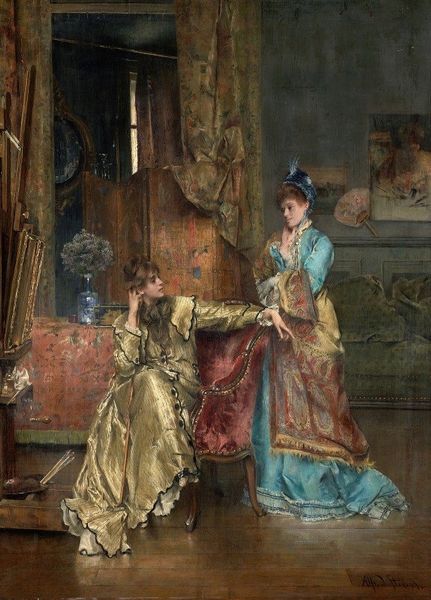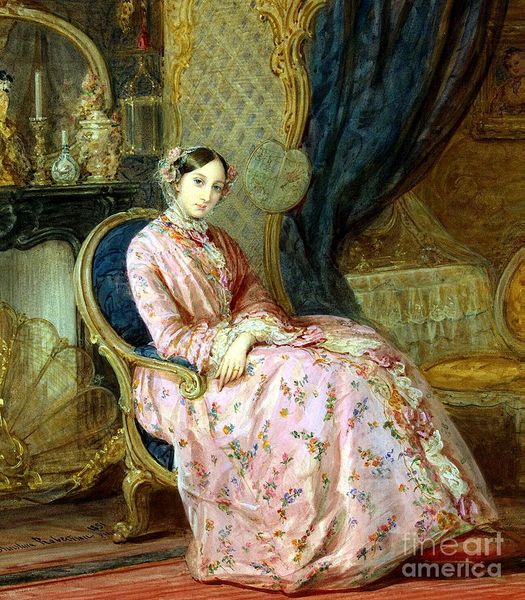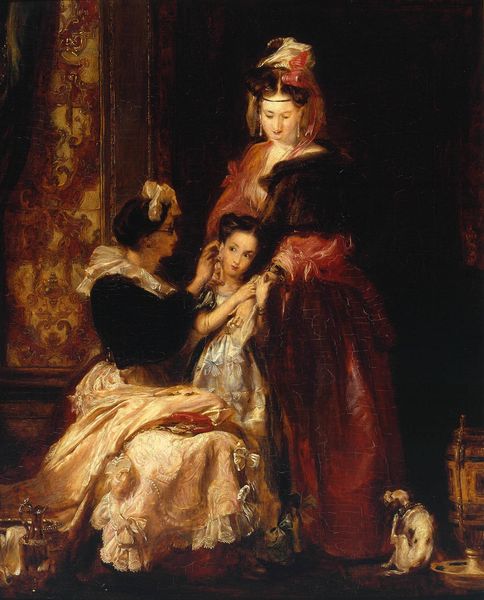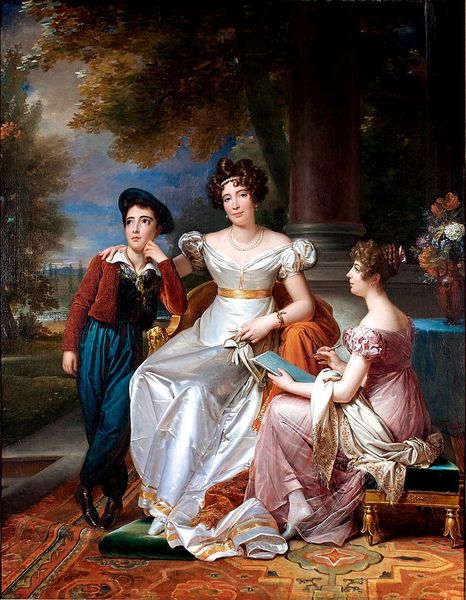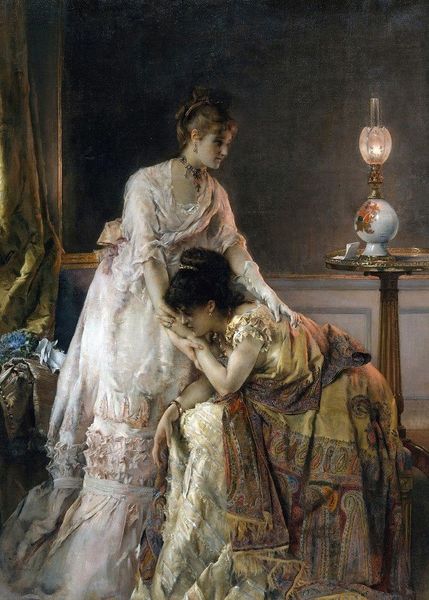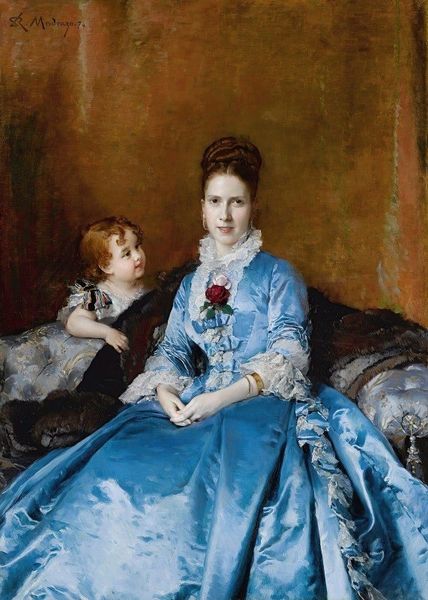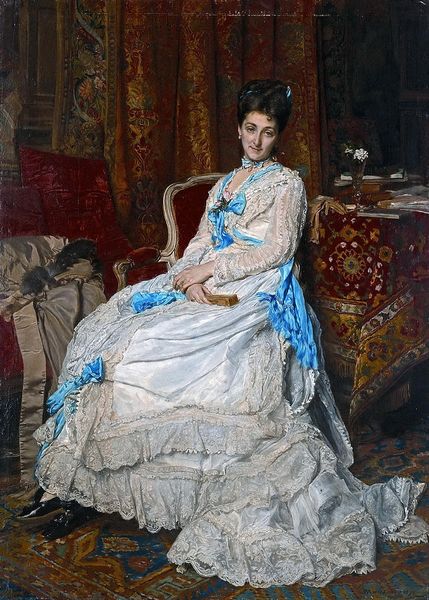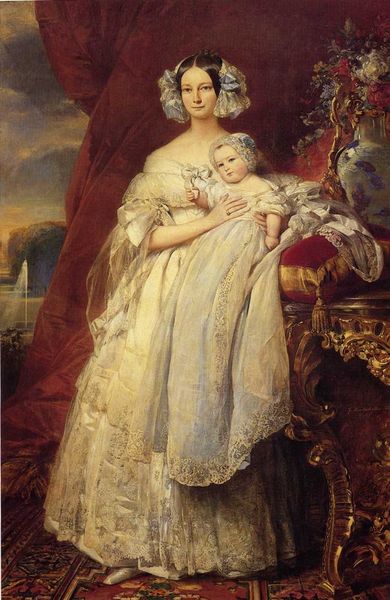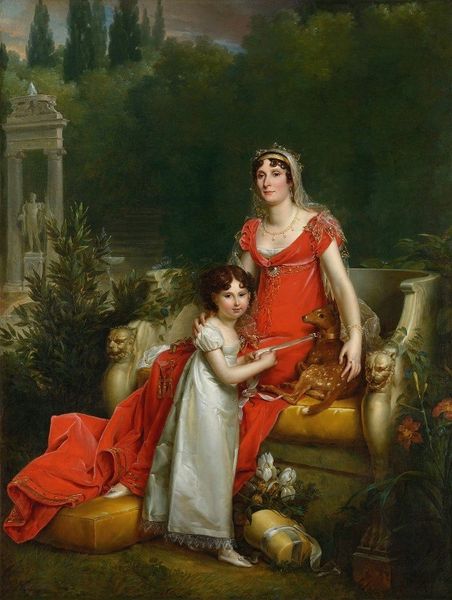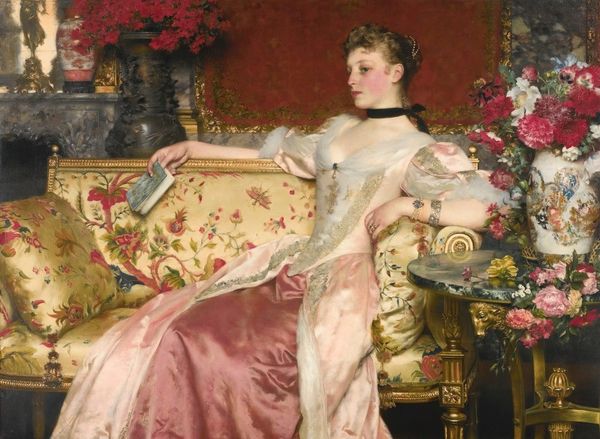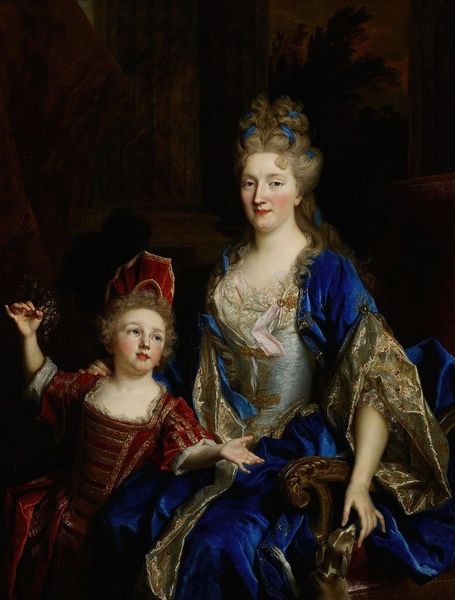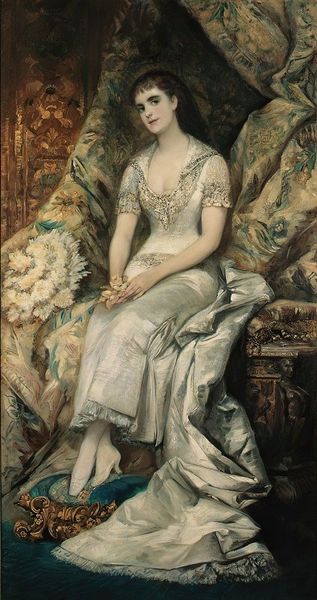
Copyright: Public domain
Curator: Wilhelm von Kaulbach created this painting, titled "Marie of Hanover and Her Daughter Mary in Marienburg Castle," in 1866, using oil paints. Editor: My immediate impression is of a heavily formal tableau; the rich fabric and precise rendering evoke a sense of dynastic importance. Curator: Absolutely. Kaulbach, though associated with Romanticism, was also known for his precise Realist tendencies and interest in historical subjects. It makes you wonder what cultural messages about royalty he embeds. Editor: Note the striking use of golden hues throughout. It's in the brocade, subtly on the daughter's dress, and catching highlights everywhere, a technique emphasizing light as a means of lending value to the scene, a formal emphasis. But is this symbolic, you think? Curator: The emphasis on gold certainly suggests prosperity, status and the Divine Right—or at least the aspirations to these. And the castle in the background functions as a powerful symbol of lineage and enduring legacy. We must remember this image carries potent associations with ideas of noble motherhood, especially through the posture between the two. Editor: Consider the geometry of the composition; the seated figure grounds the vertical, whilst the child leans and breaks this structure, disrupting its static nature. Does that break invite critique, a suggestion that social strata might be in transition? Curator: The daughter's placement certainly infuses an element of humanity and warmth amidst what could otherwise become a rigid statement about royalty. I think the detail that catches my eye is the inclusion of the open book between them, almost like they are in harmonious concert. Books and scores always present the opening to intellectual tradition. Editor: Yes! An intriguing, even optimistic symbolism there. Even if overall, I am not sure how comfortable I am with the very notion of state and class made 'realist' in brushstrokes! Still, one cannot fault Kaulbach's understanding of pictorial architecture in achieving the effect he aims for. Curator: I concur, this artwork serves as a fascinating and visually engaging example of how material portrayal intersects with the deeper aspirations of 19th-century European aristocracy. Editor: It’s undeniably beautiful as a technical exercise, regardless of what feelings we may carry about the historical and social power dynamics visualized.
Comments
No comments
Be the first to comment and join the conversation on the ultimate creative platform.
